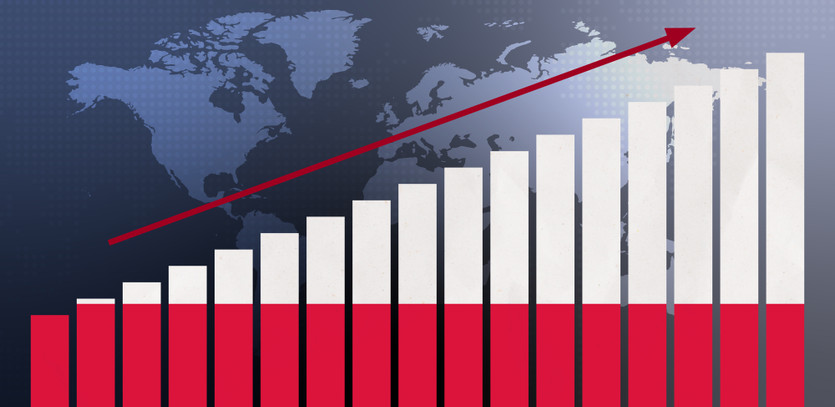Poland's Thriving Economic Landscape
The thriving landscape of Poland's economy is a fascinating tale of growth, resilience, and innovation. As the sixth-largest high-income economy in the European Union, Poland's economic trajectory has been nothing short of remarkable. Since the economic liberalization in the 1990s, the country has seen a consistent expansion in its GDP at an impressive rate of around 3% per year until the European Sovereign Debt Crisis struck. What sets Poland apart is its exceptional ability to avoid any dip in GDP growth during this tumultuous period, a feat unmatched within the European Union at that time.
Investors looking to explore international markets may find Poland’s story intriguing. With an export relationship of $54.5 billion to Germany, the country's economy demonstrates a significant reliance on its western neighbor. Despite recent conservative political shifts and a legal framework that's still in its growth phase, Poland's economy presents a canvas rich with increasing investments, GDP growth, upward-moving exports, and overall economic expansion. These aspects signal an array of promising investment opportunities for forex (foreign exchange) investors, as well as others eyeing Poland's vibrant market.
Key Highlights
- Poland's high-income economy: A beacon of growth in the European Union, fostering one of the fastest and most resilient economic environments.
- Investment in Poland through ETFs: Options such as iShares MSCI Poland Investable ETF (NYSE: EPOL) provide easy access, although alternatives like other ETFs and ADRs exist.
- Interconnected Economies: Poland and Germany’s economies are closely linked; hence, a watchful eye on Germany's financial landscape is essential for anyone investing in Poland.
- Political Considerations: Evolving political scenarios in Poland might become a concern, especially as the European Union ponders over appropriate responses.
Navigating the Intricacies of Poland’s Robust Economy
Poland's metamorphosis post the collapse of the COMECON trading bloc in 1991 is a testament to its economic agility and vision. With a $1.11 trillion economy primarily engaged in manufacturing machinery and transport equipment, Poland has positioned itself as a key player in the European Union. The export of this equipment, chiefly to Germany, is backed by stable credit ratings, strong growth potential, and manageable public debt levels, painting a picture of financial stability and optimism.
Poland's decision to remain outside the Eurozone allowed its currency to depreciate during the regional crisis, giving a vital boost to exports. Coupled with an unemployment rate that has stayed consistently lower than the European average (5.3% in July 2019), the country’s economic growth rate has emerged as one of the highest in Europe. In the fourth quarter of 2019, this rate reached an impressive 3.5%.
A progressive mindset towards foreign investors and entrepreneurs, marked by various incentives, creates a hospitable environment for international business endeavors. This open-door policy towards global investment stands as a testament to Poland’s economic wisdom and global outlook.
Easy Investment Options: ETFs in Poland
Investing in Poland does not have to be a complex affair. Exchange-traded funds (ETFs) offer a convenient gateway to Polish markets, providing instant diversification through U.S. traded securities. The iShares MSCI Poland Investable ETF (NYSE: EPOL), holding approximately $340 million in assets under management, ranks as the top choice among international investors.
However, Poland's investment landscape is not limited to this option alone. Alternatives such as the Market Vectors Poland ETF (NYSE: PLND) or American Depository Receipts (ADRs) also open doors to the Polish economy, albeit with varying risk levels.
Investing through ADRs offers a chance to tap into individual Polish companies traded on a U.S. stock exchange. Yet, potential investors should tread with caution since many of these ADRs might be illiquid and present higher risk. Some well-regarded Polish ADRs are:
- Asseco Poland (ASOZY, PNK)
- Eurocash S.A. (EUSHY, PNK)
- Globe Trade Center S.A. (GBCEY, PNK)
Advantages of Venturing into Poland's Market
Poland's economic stability and continued growth trajectory offer a compelling case for investment. Its robust economy not only survived the European Sovereign Debt Crisis but continues to post strong growth rates, tantalizing investors worldwide. According to economist consensus estimates, Poland's GDP growth is projected to persist, albeit possibly at a slower pace.
The World Bank's appraisal that the Polish economy, well-diversified and agile, was among the least affected European economies by the COVID-19 pandemic further adds to its allure. Although the economy did experience contraction during the pandemic, it was a first since 1991, underscoring Poland’s underlying economic strength.
Regulatory liberalization and reforms in many public sectors have been instrumental in shaping Poland's present economic landscape. With a labor market that has tightened, a median income that is ascending, and a poverty level that's receding, Poland's independent currency strategy has indeed paid off, steering the nation through crises and towards success.
Potential Risks and Challenges
Investing in Poland, while enticing, carries its own set of challenges and risks. Poland's economy, being largely dependent on Germany (accounting for 27% of its exports and 21% of its imports in 2019), is susceptible to any downturn in Germany's economy.
Political dynamics in Poland have also seen considerable shifts since the Law and Justice party's ascendancy in 2015. Having exerted control over constitutional court and public broadcasters, this political transformation has caused ripples of concern across the European Union.
Investors must also weigh considerations regarding Poland's regulatory environment. The Organisation for Economic Co-operation and Development (OECD) has assigned Poland lower ranks in areas like government regulations burden, challenges in the legal framework, the duration required to initiate a business, and the taxation effects on work incentives. Navigating these intricacies requires a balanced approach and an understanding of the broader European economic ecosystem.





